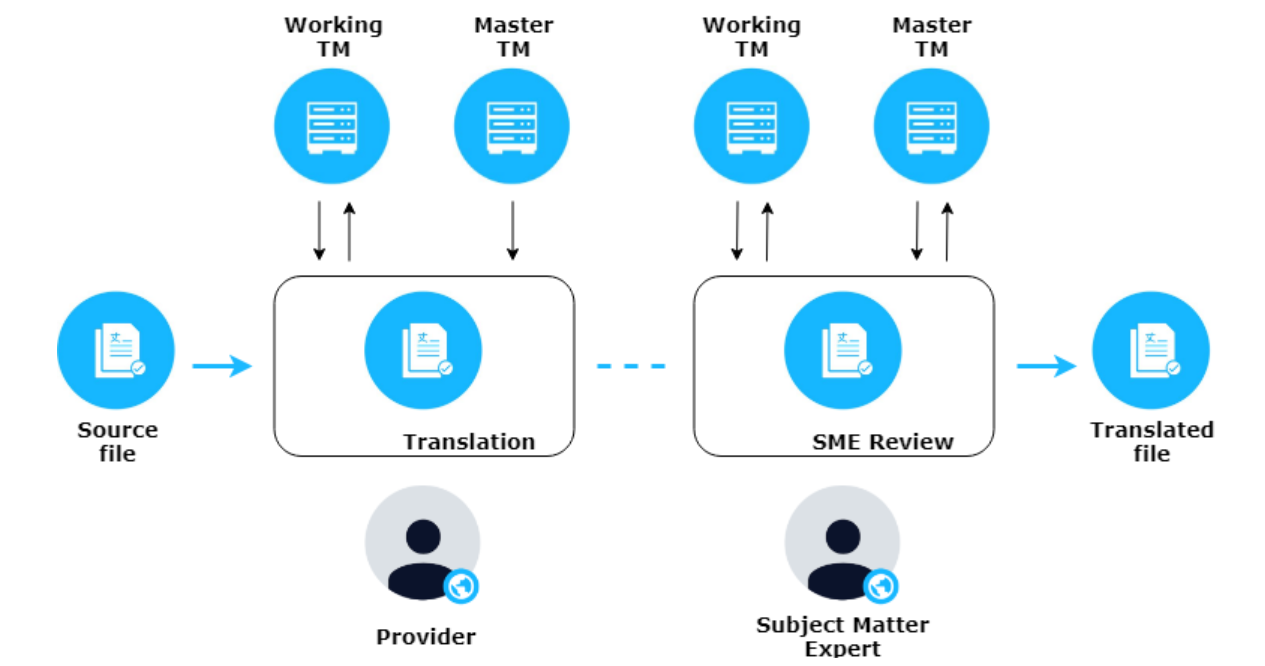
Blog
Machine Translation Report
What is the optimal MT Engine for you? Find out in the latest MT Report by Memsource.

Translation memory (TM) is essential for producing consistent translations and can dramatically reduce translation spend. However, if your TM is not set up correctly from the get-go, and well maintained, you run the risk of producing inconsistent, poor quality translations that could harm your brand image, deliver misinformation, and accumulate unnecessary costs fixing errors. We’ve put together some handy steps to follow to ensure you create quality translation memories that are easier to manage and maintain.
1. Choose your providers wisely
If you have a group of trusted providers (linguists/vendors) who deliver high-quality output you can let them save their translations directly to your master TM. However, when you work with a provider for the first time or with someone whose output quality varies, it is better to consider using a secondary “working” translation memory where they can commit segments and use the master TM in read-only mode. The master TM can be used in Read and Write mode in the later workflow steps where review is performed. It is easier to prevent content of questionable quality from being included in your TM from the start than it is removing it later.

Proposed configuration of translation memories when working with a new vendor.
2. Add context information to your source files
Context information allows your linguists to better understand the content they are translating, which improves the quality of the translation. Depending on what tool you’re using, there may be different options to provide context—you can attach assets as reference files to projects or add them on the segment level. For file formats with context key and notes properties, the information can be displayed on segment level in the CAT tool. Some editors are even able to display animations and graphics from attached external links.
3. Lock segments with high-quality matches
Pretranslating content from translation memory and locking high-score matches (context matches) will prevent unwanted changes in your TM. Some systems also allow you to exclude locked segments from analysis and quotes that you share with your provider, reducing translation volume and costs.
4. Perform Quality Assurance and spell checks before confirming to TM
It’s human nature to make mistakes. Misspellings, missing tags, incorrect punctuation are easily overlooked. Automated Quality Assurance (QA) checks can help with this. More advanced QA checks are also able to verify if correct terminology has been used—ensuring translation consistency. Some tools enable segment-level QA which won’t allow the provider to confirm segments and save them into the TM if Quality Assurance errors have been found. In case segment-level QA is not available (and the check is performed at the end of the localization process), it would be advisable to use the working TM approach mentioned above.
5. Perform Linguistic Quality Assurance (LQA) evaluation
LQA evaluation can be used to measure and qualify the translations and errors produced. It’s a great way to evaluate translation quality and provide constructive feedback to the provider.
6. Update your TMs with any changes that happen outside of your translation management system
If any linguistic edits take place in the native format or directly in a content management system, they won’t be saved in your translation memory and will be overwritten by future submissions of the same content unless the TM is updated. In such a scenario, it is important to update the TM manually.
7. Close the feedback loop
Discuss the quality of delivered translations with your provider and allow them to see the changes made to their work. It is important to clarify your expectations and review detected issues to avoid encountering them again in the future.
Conclusion
Translation memory is a powerful tool that can boost your productivity, but this is only possible if you have high-quality translation memories. Otherwise, it will have the opposite effect and end up creating additional work for your team. Use these tips to craft a first-rate translation memory strategy and you will quickly reap the rewards.



